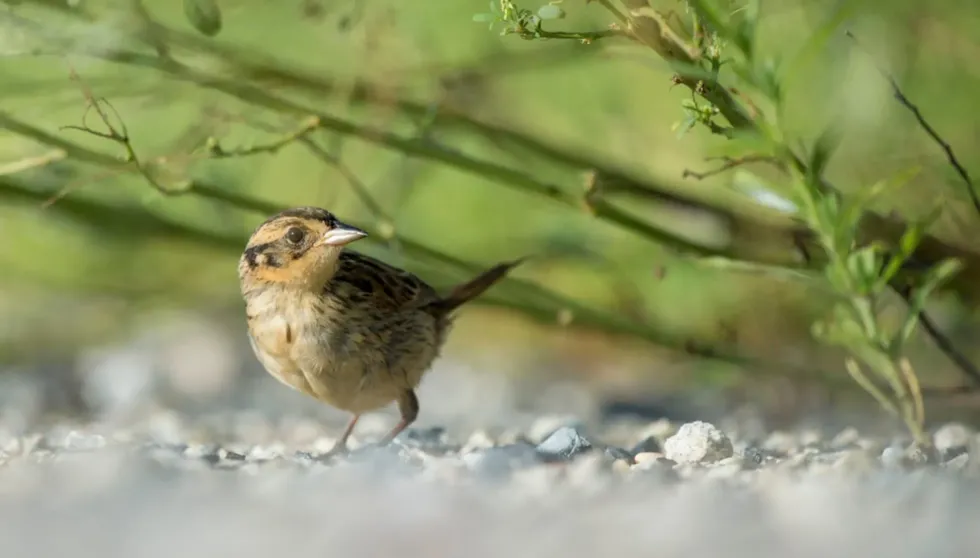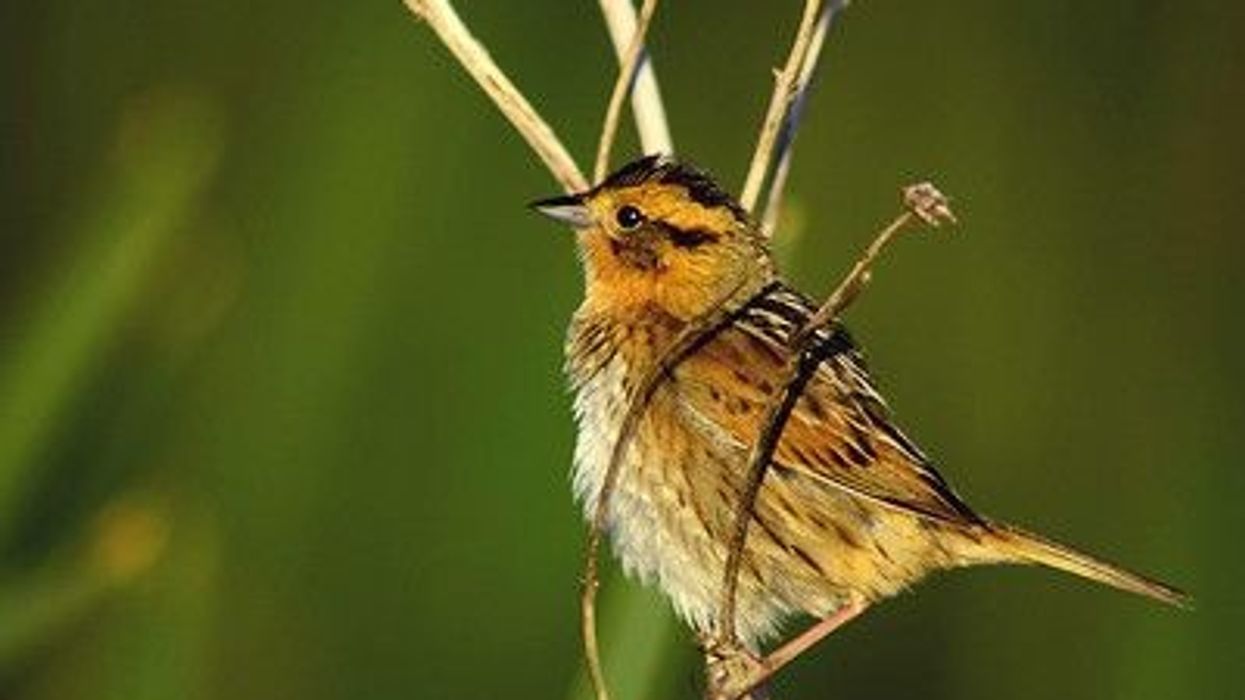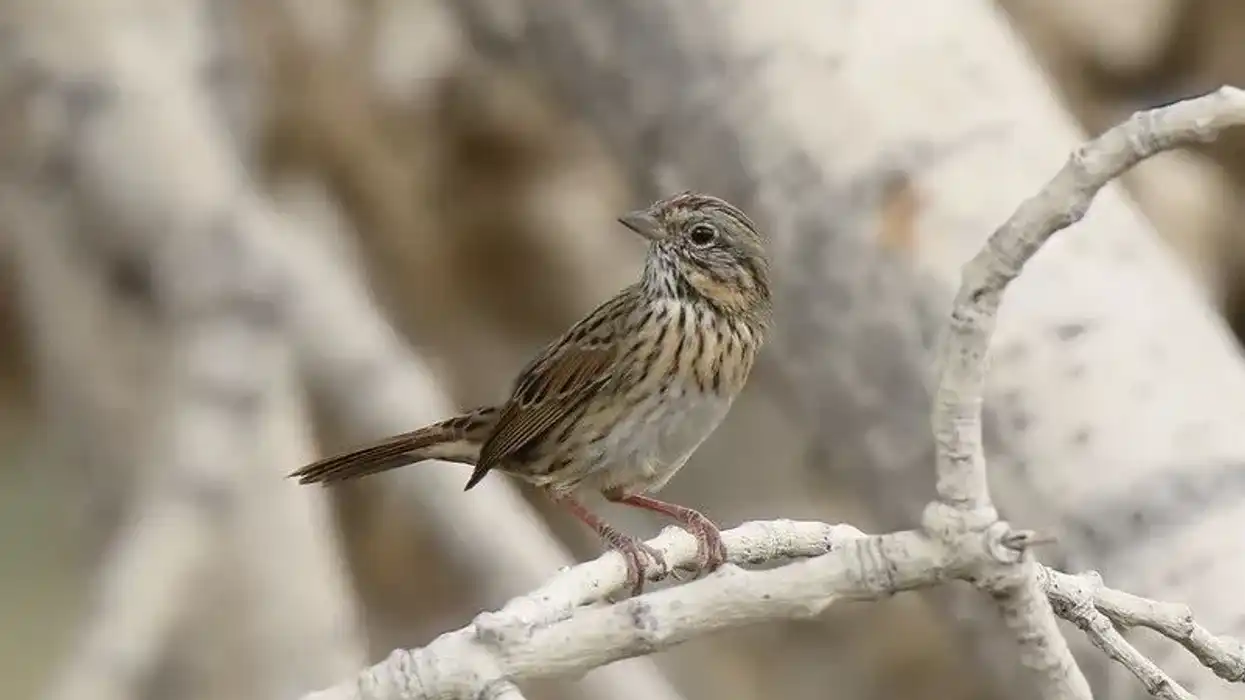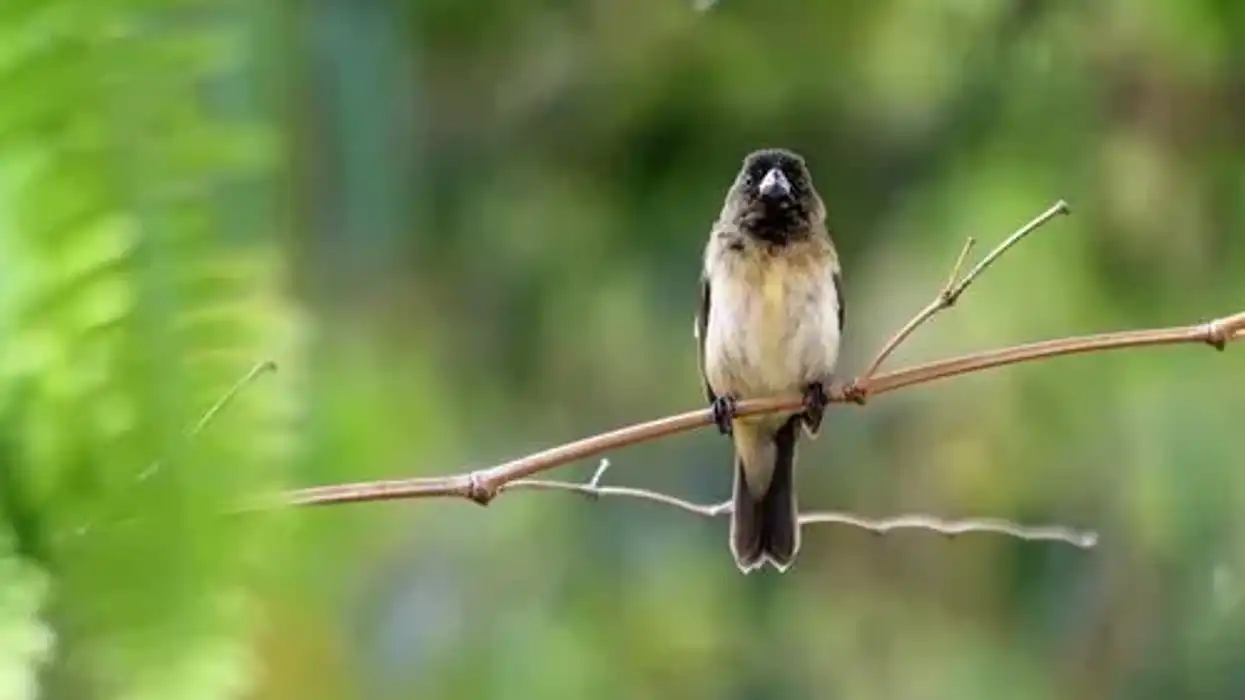The saltmarsh sparrow species belongs to the group of new world sparrows that belong to the Passerellidae family. It is one of the North American endemic birds, native to the United States's east coast or Atlantic coast.
It is a marshland sparrow thought to have been the same as Nelson's sparrow until 1995. Together, they were termed as the 'sharp-tailed sparrow'.
The saltmarsh sparrow belongs to the Passeriformes order of birds. It gets its name from its preferred habitat, the marine coastal marshland.
They mostly live close to the tides, but away from them, among the grasses, when breeding. This species is known for having multiple partners, which is rather unusual for songbirds.
The saltmarsh sparrow is very aware of the level of water that is close to it. So, the sea-level rise due to climate change and the consequent flooding of its marshes is especially detrimental to the saltmarsh sparrow.
It is currently classified as an Endangered species by the International Union for Conservation of Nature, and it is also on the watch list of the U.S. Fish and Wildlife Service.
Here at Kidadl, we have carefully created lots of interesting family-friendly animal facts for everyone to discover! Learn more about some other insects including the birds of paradise or the carrion crow here.
Saltmarsh Sparrow Interesting Facts
What type of animal is a saltmarsh sparrow?
The saltmarsh sparrow (Ammospiza caudacuta) is a bird.
What class of animal does a saltmarsh sparrow belong to?
The saltmarsh sparrow belongs to the Aves class of animals.
How many saltmarsh sparrows are there in the world?
As of 2016, only 53,000 individuals of the saltmarsh sparrow species are left in the world.
Where does a saltmarsh sparrow live?
The saltmarsh sparrow lives along the coastal and tidal salt marshes along the Atlantic coast of the USA in North America.
What is a saltmarsh sparrow's habitat?
The saltmarsh sparrow birds remain close to the tidal salt marshes most of their time. During the breeding and winter, they tend to inhabit the saltgrass as well as needle rushes, and places removed from the tide.
The Chesapeake bay sees more of the saltmarsh sparrow population in the May-October range, whereas Florida sees more of them during the winter. When there is a snowstorm, the saltmarsh sparrow takes refuge in the dense red cedar trees.
Who do saltmarsh sparrows live with?
Saltmarsh sparrows live alone or in small flocks.
How long does a saltmarsh sparrow live?
The males of the saltmarsh sparrow species live for about 10 years, while the females live around six years.
How do they reproduce?
The saltmarsh sparrow birds reproduce by mating and laying eggs. Both the males and the females have multiple partners, and the female often lays eggs with different fathers in the same brood.
What is their conservation status?
The conservation status of the saltmarsh sparrow birds, according to the International Union for Conservation of Nature, is Endangered.
Saltmarsh Sparrow Fun Facts
What do saltmarsh sparrows look like?

The saltmarsh sparrow is 4.7-5.1 in (12-13 cm) long and has a wingspan of 6.5-7.7 in (16.5-19.5 cm). It has grayish streaks on its white mantle and its upper back.
It has brown and buffy-looking edges on its rump, upper tail, and lower back. The feathers on the tail of the saltmarsh sparrow are sharp and brown. The upper portions of the wings are mostly brown, with hints of white, black, and gray.
The wings can overall be described as blackish. The saltmarsh sparrow's belly and underparts are white.
The breast and coverts on the under-tail also have some black streaking. The supercilium is an orange-buff and its beak is darker on the upper mandible and pale yellow on the lower one. They have dark brown eyes with an eye-ring that is buffy white.
The feet and legs are yellow-gray and the ear-coverts are gray as well. There is little to no sexual dimorphism, but the juvenile is buffer and has more prominent streaks on its underparts.
How cute are they?
Saltmarsh sparrows are very beautiful and adorable tiny birds. They display a variety of colors on their bodies, with the most beautiful streaking all over. They can fit inside a human hand, they are that small. The saltmarsh sparrow is a songbird, and the males sing songs that are sweet.
How do they communicate?
Saltmarsh sparrows are songbirds so they communicate via songs and calls, however, only the males sing songs. They sing 'tuptup-sheeeee' buzzes, as well as soft hisses and gurgles of 'ts-ts-ssss-tsik'. They utter notes of 'chip' and sharp, repetitive 'tsick's'.
How big is a saltmarsh sparrow?
The saltmarsh sparrow is usually 4.7-5.1 in (12-13 cm) long, with a wingspan of 6.5-7.7 in (16.5-19.5 cm), which makes it two or three times bigger than the bee hummingbird.
How fast can a saltmarsh sparrow move?
The saltmarsh sparrow birds take short flights, as they largely remain on the ground. But being sparrows, they may be able to fly up to speeds of 24-31 mph (38-50 kph).
How much does a saltmarsh sparrow weigh?
The saltmarsh sparrow weighs around 0.6-0.8 oz (17.1-24.1 g).
What are the male and female names of the species?
The males and females of the saltmarsh sparrow songbird species are not referred to with specific names.
What would you call a baby saltmarsh sparrow?
A baby saltmarsh sparrow would be called a chick or a fledgling.
What do they eat?
Saltmarsh sparrows eat invertebrates, seeds, grasshoppers, caterpillars, beetles, wasps, ants. It is also known to feed on spiders, amphipods, snails, small crabs, and marine worms.
Are they poisonous?
No, saltmarsh sparrows are not poisonous.
Would they make a good pet?
No, saltmarsh sparrows would not make good pet birds, nor should anyone try to adopt them as pets, because their populations are declining dangerously and because they live near their very specific habitats of tidal marshes.
Did you know...
Saltmarsh sparrows have the most threatened habitats around the world. The sea-level rise around these marshes poses the greatest risk to the various species that call this habitat their home, including the saltmarsh sparrow and other birds of North America.
A new review has been undertaken by the U.S.
Fish and Wildlife Service to classify the conservation status of these North American birds as Endangered. The conservation of the saltmarsh sparrow birds is of utmost importance and urgency since their population has declined by 30% in the past 30 years.
The saltmarsh sparrow birds belong to the order Passeriformes, family Passerellidae.
If their nests are not placed at higher elevations, they may get destroyed during high tides in the salt marsh habitat. Apart from high tides, storm surges may also cause flooding that contributes to nest mortality. The saltmarsh sparrow shows adaptation to the high tide problem by repairing the damaged nest site, or breeding between two high tide seasons.
Samuel Griffith Roberts, a University of Delaware Research Associate, conducted a study on how the seaside and saltmarsh sparrows are coping in the New Jersey Edwin B. Forsythe National Wildlife Refuge.
He found that the seaside sparrows are likely to have a stable population trend, but that the saltmarsh sparrows may become extinct in the coming 20 years in the New Jersey refuge.
The study also states that because of the similarities between the two species, the seaside sparrow may follow after the saltmarsh sparrow by going extinct in this refuge themselves.
Nelson's vs saltmarsh sparrow
Saltmarsh sparrow and the Nelson's sparrow were collectively known as the 'sharp-tailed sparrow' up until 1995. There are differences between these two similar species that led to their separation into different species.
The breasts, sides, and faces of Nelson's sparrow show more continuity than the colors on a saltmarsh sparrow. Also, the triangles on the face of a Nelson's sparrow are more toned than the saltmarsh's. Also, the saltmarsh sparrow has dusky tones on its supercilium, which the Nelson's doesn't.
The beak of the saltmarsh sparrow is ever-so-slightly longer than that of the Nelson's sparrow.
The Nelson's sparrow inhabits the wetlands adjoining non-tidal freshwater bodies, while the saltmarsh sparrow inhabits the tidal coastal waters. Sometimes their habitats overlap and the species inbreed.
The songs of Nelson's sparrow and the saltmarsh sparrow are different. The Nelson's sparrow's is a buzzy chip that succeeds a loud hiss, whereas the saltmarsh sparrow's is a combination of buzzes, gurgles, and trills.
Are saltmarsh sparrows endangered?
Yes, saltmarsh sparrows are classified as Endangered by the IUCN. Due to climate change, the sea levels are rising.
The rising sea levels cause the coast to shift inwards, occupying more land. Saltmarsh sparrows are coastal and tidal creatures. They breed not too far away from the coast, at slightly higher elevations, and this inwards shifting is proving detrimental to their population which is rapidly declining.
Here at Kidadl, we have carefully created lots of interesting family-friendly animal facts for everyone to discover! For more relatable content, check out these fox sparrow facts and red-eyed vireo facts for kids.
You can even occupy yourself at home by coloring in one of our free printable Saltmarsh sparrow coloring pages.









